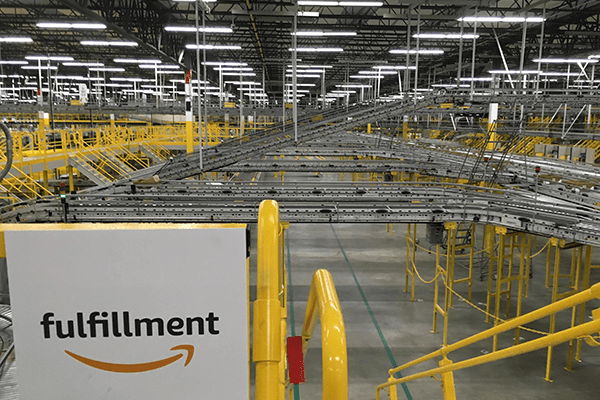|
RCBJ-Audible (Listen For Free)
|
Towns Should Say “Yes” To Warehouse Projects But Build In Protections For Long-Term Health And Quality Of Life
By Rick Tannenbaum
Are warehouses and distribution centers the holy grail for commercial development in the Hudson Valley?
As we all know, just about everything can be delivered to our front door. And the pandemic has brought into stark relief the importance of deliveries from companies like Amazon, Walmart and Target. We are witnessing a boom in the construction and leasing of receiving and fulfillment centers but at what cost to the environment and our quality of life?
As Rockland County’s towns consider new comprehensive plans and applications for warehouse and distribution centers reach planning departments and town boards, government agencies should say “yes” to warehousing but also look beyond construction jobs and tax ratables and establish guidelines to address environmental impacts caused by large warehouse projects.
Distribution and fulfillment centers are essentially cavernous buildings visited by hundreds and sometimes thousands of diesel trucks daily. Each warehouse bay can host up to 24 diesel truck visits per day. A 50-bay warehouse can intake over 1,000 diesel trucks per day, many waiting in queues for their turn at the loading dock. But, building distribution and fulfillment centers closer to the “last mile” of deliveries brings diesel exhaust closer to homes, schools, playgrounds and other areas of congregation.
Jobs and taxes are a desirable component of economic growth. However fine particulate matter (PM2.5) from diesel truck exhaust enters the lungs and bloodstream, leading to chronic inflammation and illness, increased cancer rates, and premature death. The air pollution from heavy-duty diesel trucks is particularly harmful to developing children, stunting their lung development, and causing asthma and respiratory illnesses that will impact them the rest of their lives.
Chronic exposure to diesel air pollution weakens the immune system. Even short-term exposure to fine particulate matters with a diameter up to 2.5 microns accelerates brain aging, increases the risks for dementia and may impair mental ability in the elderly even at levels previously thought of as acceptable. There is no safe level of PM2.5.
Aside from PM2.5 pollution, trucks also bring noise, road wear and tear, traffic on local roads and through local neighborhoods, and increased danger of traffic accidents.
So how do we balance the needs to protect health and stimulate economic growth?
Town and County planners should consider the following prescriptives for warehouse project applications:
- No distribution centers should be sited within 2,000 feet of a school, playground, church, or residential zone
- Compliance with local and state idling laws should be part of site plan and occupancy approval
- All forklifts and other loading vehicles operating inside or around the buildings must be electric
- Owners and tenants of distribution centers should be jointly liable for violation of idling law
- Maximum sizes should be implemented on warehouses to avoid concentrations of diesel pollutants.
Warehousing is in high demand. Recent deals for Amazon in Dutchess County (631,000sf), Orange County (1,100,000sf) and the recent addition of a 220,000sf Amazon fulfillment center in Blauvelt are the harbinger of what’s to come.
Medline in Orange County (an additional 1,000,000sf) is just one project amid the 6 million square feet of warehouse properties coming online in Orange County. New Jersey has more than 1 billion square feet of industrial space, with e-commerce fueling 50 percent of new demand.
Idling laws in New York State contemplate fines for diesel trucks idling in excess of five minutes but idling regulations are enforced by DEC Conservation Officers. Local law enforcement needs to enforce idling laws in the towns and county. Approvals for warehouses must also consider requiring remote air quality monitoring stations at warehouse sites over certain sizes.
Trucks may be flagged as Amazon Prime or Walmart delivery vehicles but in all likelihood are owned by independent operators, many from out of state, servicing Amazon and other warehouses. Warehouse owners and tenants must be made jointly liable for the fines imposed on drivers illegally idling at their properties.
Finally, Electric vehicles may one day save the day, but the reality is that there are no viable long-haul electric trucks and no reasonable expectation that they will replace diesel trucking any time soon. Plans need to be made now to protect population centers from harmful effects and externalities.
Rick Tannenbaum sells and leases commercial investment property with Houlihan Lawrence Commercial. Phone: 917-689-1799 rtannenbaum@hlcommercialgroup.com
Read also:
Municipalities Should Consider Moratoriums on Future Gas Pumps; Zone For Influx of EV Stations
The ABCs Of ‘Transfer Of Development Rights,’ & Considerations For Clarkstown’s Comprehensive Plan










